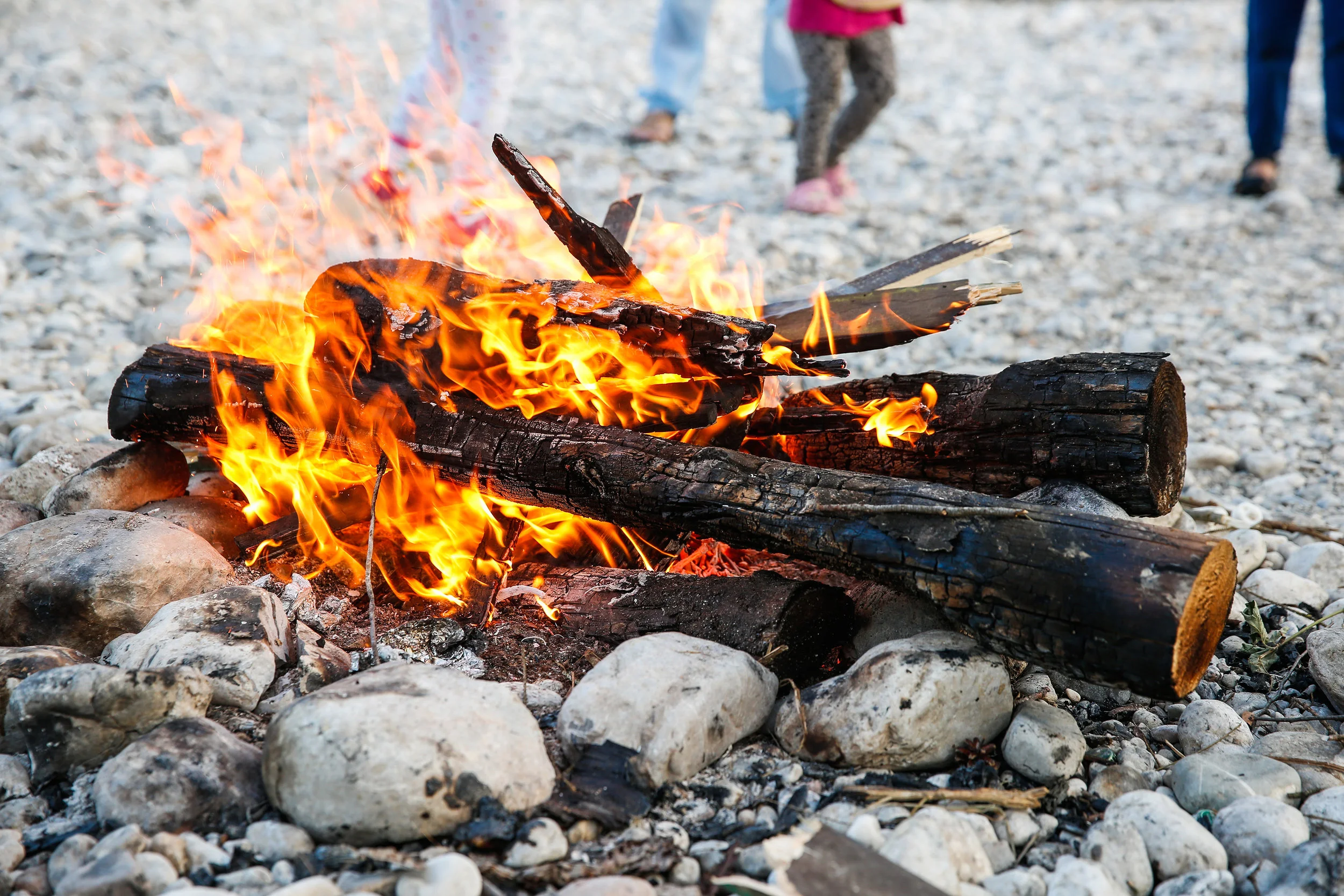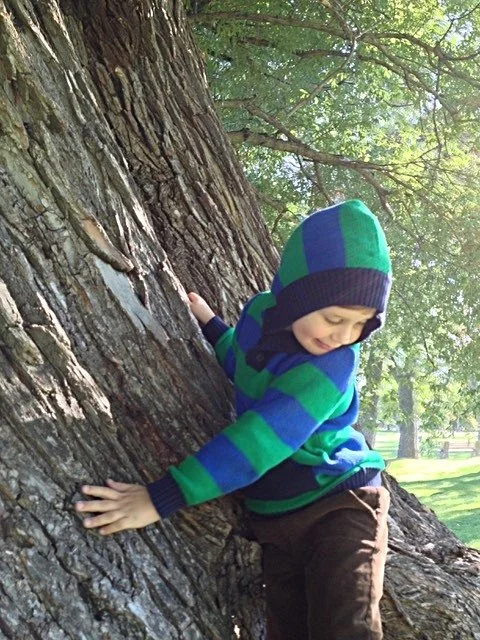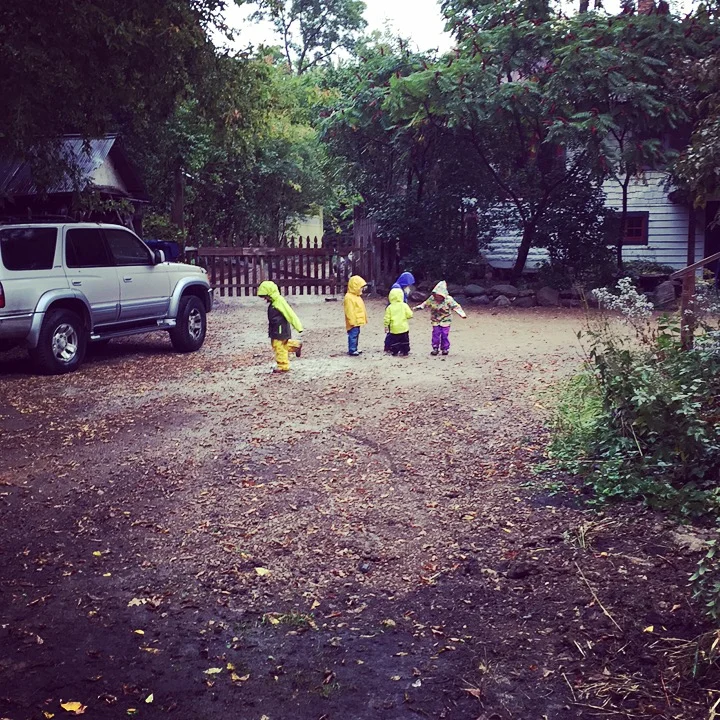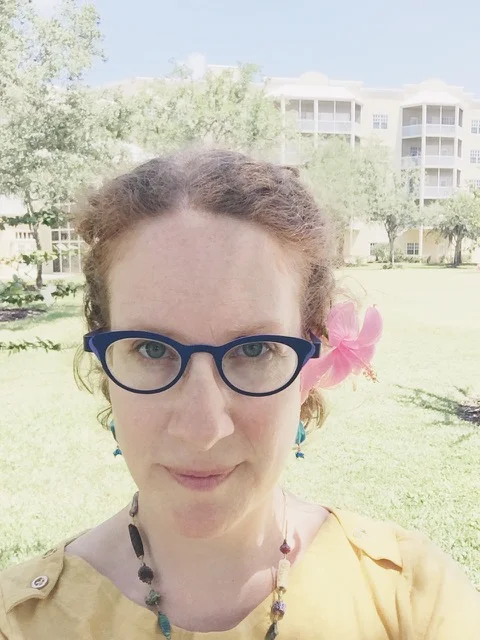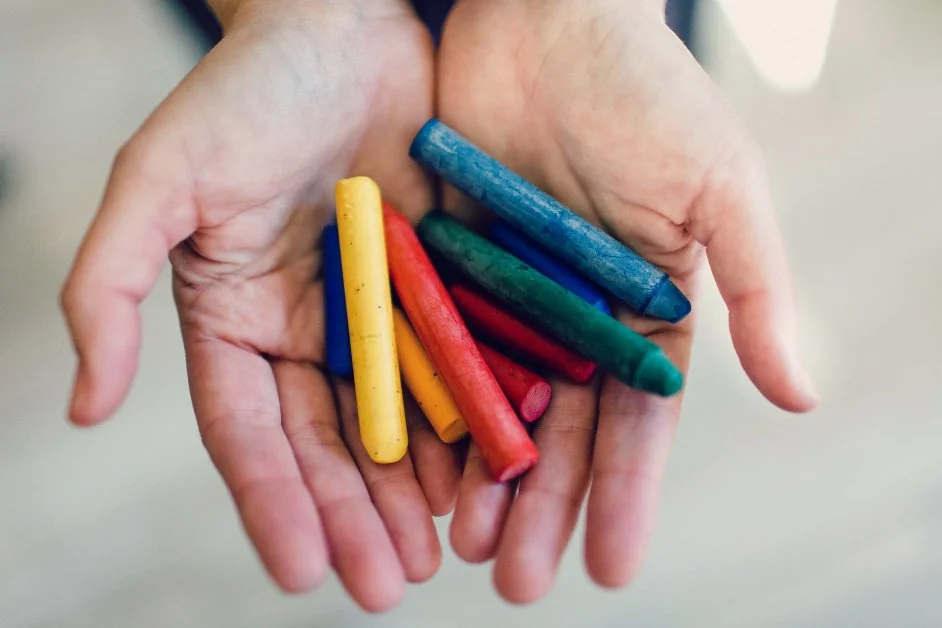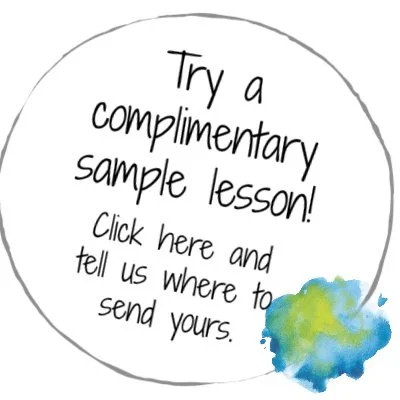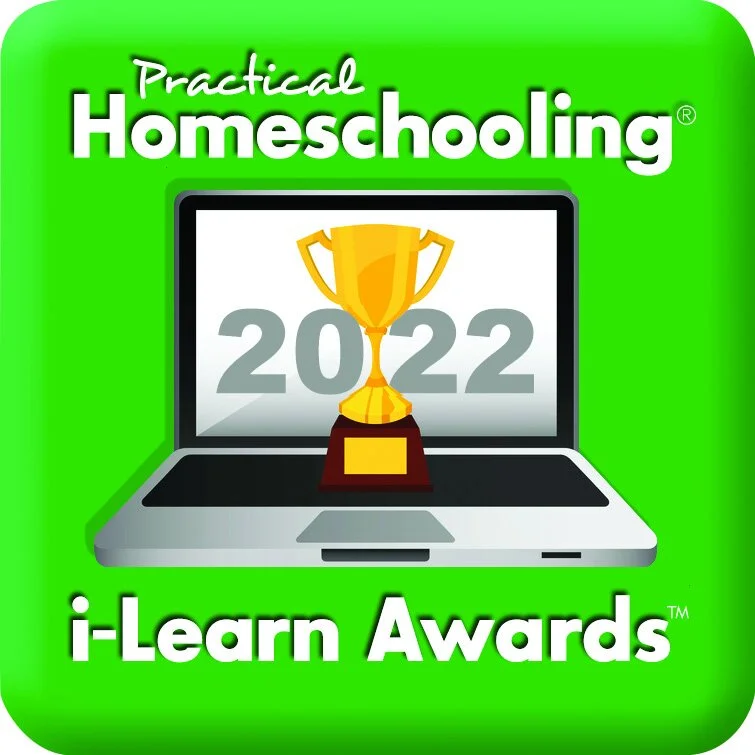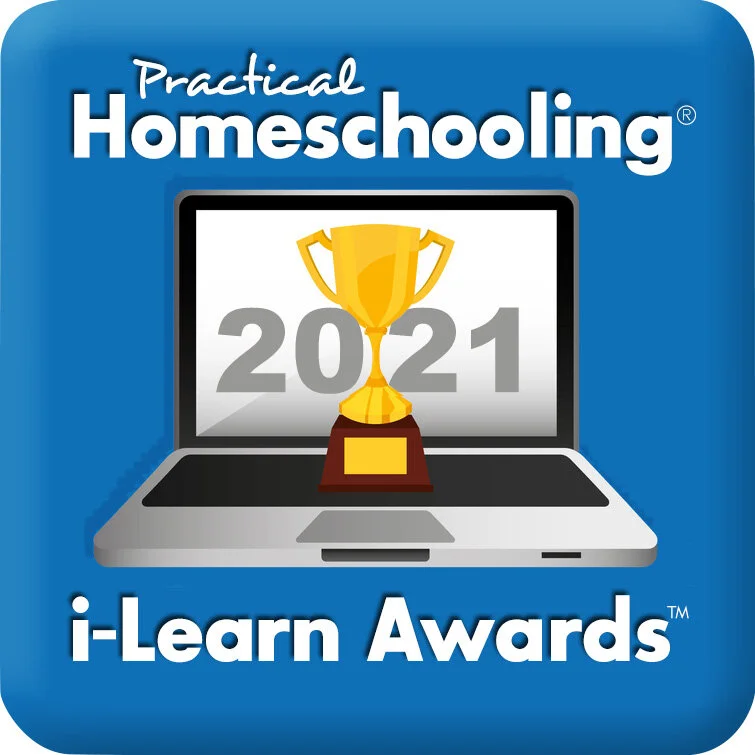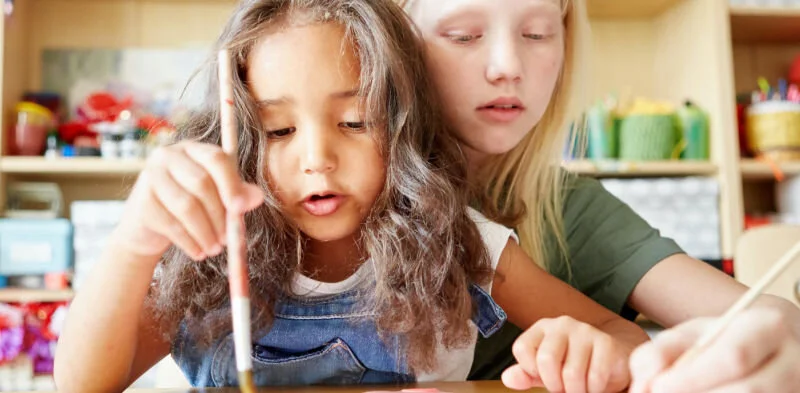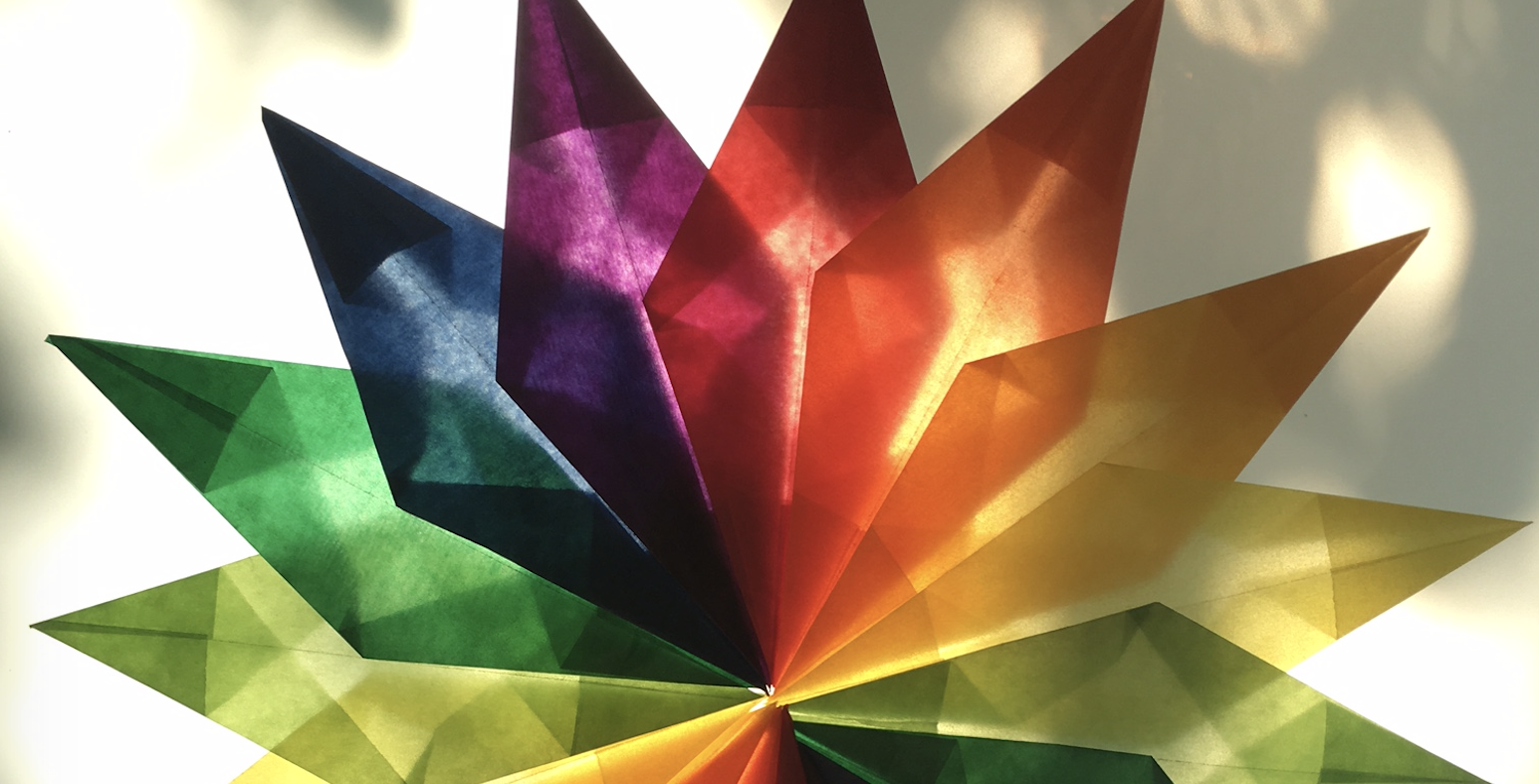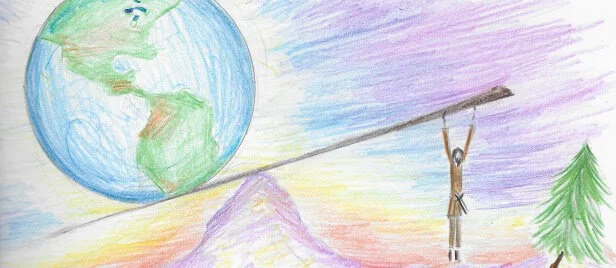
Waldorfish Blog
Why Waldorf Chalk Drawing?
Chalk art in the Waldorf curriculum is a medium for extending the storytelling that is happening the classroom. It is a medium for enlivening the curriculum through pictures.
6 ways chalk drawings enliven the Waldorf curriculum:
Image: ©Waldorfish, all rights reserved
In Waldorf Education, it is always through storytelling that the images arrive. Surrounded by story, the children live into their imaginations and each will create mental pictures unique (and most meaningful) to them. Through the artistic activities that follow the review portion of a lesson, the children are able to live into the story experience again. Here they place their own feelings on it. This allows a true and unique connection to the content of the lesson.
“Ordinary everyday life can be portrayed in meaningful pictures and images. The teacher must fill with inner conviction and warmth the pictures he/she presents to the souls of the children. They can derive strength for the whole of their lives from lessons that stream from heart to heart rather than head to head.”
1.Nourishing the Senses
Chalkboard drawings are intentionally beautiful and calming. They offer a soft, sensory-rich visual experience that supports the development of aesthetic awareness and helps create a nurturing classroom or homeschool environment.
2.Engaging the Imagination
Rather than relying on abstract symbols or rote facts, chalk drawings speak in images, mirroring how young children naturally think and learn. This supports deep imaginative engagement, especially in the early grades.
Beautiful and temporary, chalk drawings support learning in multiple ways!
3.Supporting the Lesson’s Theme
Each drawing visually anchors the main lesson content - whether it’s a fable, a math story, or a historical scene. The image becomes a living memory picture that children carry with them, making abstract content more memorable and meaningful.
4.Modeling Artistic Process
Children observe that the teacher created the drawing by hand. This models care, creativity, and intention - and it can inspire children to take joy and pride in their own artistic work.
5.Creating Rhythm and Atmosphere
The chalkboard drawing sets the tone for a lesson block or season, helping children orient themselves rhythmically in time. It quietly says, “We’re entering this story now,” or “This is where we are in the year.”
6.Inviting Quiet Reflection
Because the drawings are temporary and made with care, they invite a sense of reverence. Children often return to the blackboard, sitting in quiet contemplation, taking in the image again and again. It becomes a subtle, sacred part of the learning space.
New course line-up!
We've finalized our course offerings for our next school year!
Individual info pages for each one will be available soon on our website. For those who, like us, get a little twitchy with all the waiting, here's what we know for certain .....
Geometry
Photo credit: Jessica Richardson
Brian is teaming up with fellow Waldorf teacher, Caitlin Amajor, for this G5-8 series! We have a FAQ page here, where you can learn more about this artistic, inspired program. Registration opens on July 15th! Courses begin on Sept. 3rd. There is also a link to a new free lesson on the FAQ page.
Grade One wet-on-wet painting
Waldorf teacher Amanda Mercer has been busy creating a beautifully supportive program for the Waldorfish community! This video series will guide parents & teachers on a journey through each primary color via wet-on-wet painting techniques & original verses. G2 and G3 courses are in the pipeline as well, although release dates for these are not set yet. The G1 course is OPEN for enrollment! Learn more about it, here!
Photo credit: Amanda Mercer
For the 2018/2019 school year we are pulling together our favorite lessons from the first two sessions of this program! This collection will be perfect for families who have not participated in WA previously. As in prior sessions, the lessons will post x1 per week, and Brian & I will be actively involved in the classroom. Registration will open July 15th, the course will begin August 10th. (see updated info, here!)
Festival Art
We're teaming up with storyteller Sara Logan for this new course! 10 original/adapted stories paired with art lessons to carry your family through the full circle of a festival year!! This course is ideal for families who have previously participated in the Weekly Art program, or those looking for less frequent art lessons than offered in our other programs. NOTE: this program will initially only be available to WA students currently enrolled in the '17-18 session. It will become available to the whole community in time for the '18 Advent season!
As always, send us your thoughts + questions by emailing us at support@waldorfish.com
All our best to you from the garden,
~Robyn (& Brian nearby) Wolfe
Pedagogical Stories: Start with the Stories in Your Bones
I come from a family of storytellers, though if you asked them, they might not own it.
The stories shared around my grandmother’s living room, in the front seat of my mother’s car, at restaurant dinners with my dad, these stories have shaped my identity and my sense of belonging. The stories don’t always have a clear point or moral. Sometimes, they don’t even have a plot. Each one, though, for good or bad, has been deeply instructive for me as a growing and developing human being — and don’t forget, we are growing and changing for the entirety of our time on earth!
All of these stories, if told when there was a desire to teach me something, or to pass on a particular piece of wisdom, could have been pedagogical stories. These stories, which my family members knew as they knew their own breath, have become part of my own legacy of stories, and are woven into my very bones and being.
Prefer to listen to an audio recording of this post? You can do that, here:
When you begin to delve into the deep soil of waldorf pedagogical storytelling, it can be overwhelming.
My advice, is to start with what you know in your bones. Start with your own life. Your life is a source of stories that are both unique and universal. They are unique, in that they are your own, and no other human being in the course of history has your biography or destiny. They are universal, in that we, as human beings on a path of development towards our fullest expression of selfhood, take a common journey between birth and death. This journey may lead us into dark forests or underground caves, and while we may never find ourselves living in a palace at the end of it, the union of “[our] avocation and [our] vocation, as [our] two eyes make one in sight,” as Robert Frost wrote, is the real happily ever after that fairytales offer.
What stories are within you already?
To start telling pedagogical stories, you must listen.
Listen to your child, or to the children around you, and try to understand what they’re going through. Hear their concerns, their desires, their clamor for attention. Then, respond with something from your own life. In the US, it’s common for my friends and me to bond by sharing stories with one another — “Oh, that happened to you? Here’s what happened to me that was similar…” — not as a way of one-upping each other, but as a way of saying, “I’ve been there, too.” You can do that same thing for your child. It can be hard, even painful, to excavate some of the darker places in our memories. Don’t feel you have to bare your soul right away. It wouldn’t be appropriate in most cases, and it’s not going to meet the child’s needs.
Here are a couple of concrete examples: your child had a rough day at school. She was trying to help a friend who was upset, and the teacher noticed her talking and called her out in front of the rest of the class. When she tells you this, what do you want her to know? Perhaps you want her to know that you understand how important it is to help someone else, even when it could get you into trouble, so you share the story of a time you did that. Maybe you want her to gain the courage to talk to the teacher tomorrow about what happened. You could share a story about a time you had to be brave.
There’s no need to tell your child what you want them to get out of the story.
Rather, you can ask them about it — What do you think I learned from that? How do you think my mom felt when she heard that? Try adding sensory details to your story — what did it look like, sound like, smell like, in your 3rd grade classroom? Paint a picture with your words, and then let it dissolve. Let your child decide what to do with the story. She will take the action she’s ready to take.
Perhaps you notice that your children have been leaving their toys or sports equipment in the yard where it could be damaged by the rain, or by a pet, or could even be stolen. You might remember how you left your tennis racquet on the back steps and your dad stepped on it and bent the frame. He was okay, and you were kind of able to straighten out the racquet, but it was never quite the same after that.
Now, this is the hard part for me, when there is a specific behavior I want to see change: resist the urge to say, “And that, dear children, is why you must go pick up all the baseball bats, soccer balls, and rhythmic gymnastic apparatus from the yard RIGHT NOW!”
Rather, tell the story during a time that isn’t cleanup time, and talk about the story with your children without trying to lead them to a particular behavior. Then, when it’s time to clean up the next day, or the next week, you might say, “Gosh, I know I was really sad when that tennis racquet got bent out of shape. I really don’t want you to have to go through that.” Keep your tone earnest and matter-of-fact.
It’s not a cure-all. And to be honest, what’s even more important than their capability to influence and instruct, is that these stories help you to create a connection.
Stories build connection, imagination, and wonder!
My favorites from my mom’s childhood, were the ones that involved her sisters or cousins, and the trouble they got into. Especially as I moved through the nine-year change and into early adolescence, these stories were a way to understand my mom as a fallible, good-hearted person, able to laugh at her mistakes and learn from them. I loved, and still do, hearing the story of how grandma was too short to reach the pedals on the big 1930s car, so she and a friend learned to drive together, one steering, and one working the pedals. Their license had both their names on it! I learned creativity and resourcefulness from that one. My family, as far as I know, weren’t on a mission to teach me those things through those stories, but their choice to tell those stories spoke volumes to me about what we, as a family, valued and stood for.
The stories you share don’t have to have a particular goal or value in mind that you want to pass on to your kids. Sometimes, you might not even know why a particular story springs to mind, and it might be just the one they most need to hear right then. And then, sometimes your stories will fall flat. That’s just the way it is. Keep trying, keep telling, but also keep listening. The story that failed, might be needed later; and in the failing you might figure out which story you wish you had told instead. You can still tell it. Please do.
You can share memories that are more recent, too! If your child has a misunderstanding with a friend, you can share about a misunderstanding you’ve had, even just the other day. No need to get into too much detail or too many adult reflections — “I was really mad, because I thought she’d said something mean about me to our friend. I had heard something from another friend, and I was sad and hurt. When I asked her about it, she explained the whole conversation, and it was actually about something else. I was really glad I asked, even though it was hard.”
The stories we choose to share communicate so much about our values and our own perceptions of life. By passing them on to our children, we are giving them a gift from a past more distant than they can touch themselves, one that can carry them forward into the future with courage and a sense of belonging. Right now, those are two things of which our world is in dire need, so let’s start small, and really listen and share with the people around us, no matter how big or small they are.
~Sara
Related content:
About the Author
Sara Renee Logan has been telling stories to anyone who would listen since she was seven. Many years as a Waldorf teacher allowed her to tell stories about everything from Baba Yaga's hut on chicken legs, to the water cycle, to the life of Joan of Arc. She continues to share her love of storytelling and stories with audiences of all ages, specializing in bringing the wild beauty of folktales to young and old.
Sara has a home on the web at sarareneelogan.com where she shares stories of her life, tips, and ideas for parents and other storytellers. Sara offers coaching services and the Story/Reading process of story-based biography exploration that guides seekers to look deeply into their own life stories through the lens of traditional tales. Sara shares her life with her partner, Melanie, their son, and an unreasonable family of pets.
Find Sara on Instagram @seven_ravens_sara
What are Pedagogical Stories?
For millennia, cultures around the world have used stories to teach and to heal.
Jesus’ parables are an example that many people know. Others may be more familiar with Jataka tales, stories of the Buddha’s incarnations. Still others have learned from the stories of Anansi, of Coyote, of Nanabouzhoo.
Pedagogical stories are wonderful to bring to the young child.
Why have our elders and teachers chosen stories as the best way to teach and to illustrate so many lessons that cannot be taught solely through direct experience? Why not just say, “Treat the poor kindly,” or, “Don’t trust someone unless you see what they value?” or, “Honor those who came before you?” Those are important things to say, but they aren’t enough. They aren’t enough, because we are storytelling creatures, and we construct meaning through images, experience, and emotional connection.
Waldorf teachers will talk about “pedagogical stories” as if that is a term in common use.
What the heck is a pedagogical story? It sounds either weird and esoteric, like you need years of schooling to understand it, or else like something horribly distasteful, like castor oil or whatever food you were told as a child was good for you, that tasted like feet.
Prefer to listen to an audio recording of this post? You can do that right here:
It’s neither. A pedagogical story is a story that leads. Pedagogy means “leading a child” or “teaching,” so these are stories we share with children in order to teach something specific.
That teaching can be something like, “people don’t like it when you hit them,” or “don’t leave your shoes in the middle of the floor for me to trip over,” or it can be a support for times of struggle or change.
The questions I hear most frequently about pedagogical stories are, “How is a story going to help?” and, “How on earth can I come up with a story about THIS?”
My quick answers are as follows:
• A story is going to help in a number of ways. First, when you take the time to tell a story, to tell it out loud, without a book, without a script, you are giving a gift of time. This in and of itself is healing. It says to the person or people hearing the story, I am with you, here, now.
• A story is going to help YOU, the adult, because it will allow you the space to step back and see the situation from another perspective. When I told my class stories about my (imaginary) friend Janet and her class at Whispering Winds Waldorf in Walla Walla, Washington (also imaginary), and all the problems they were having, it gave me the chance to find humor and
lightheartedness in the challenges my students were facing and creating.
• Another way a story helps, is by giving the listener the freedom to take in the message of the
story as deeply as they are ready. That might not be very deeply at all, and that has to be okay.
It might also reach them on a profound level whose effects will not be fully appreciable until
adulthood. And, of course, it can be both of these at once.
What could pedagogical stories do for your growing child?
How do you come up with a story?
There are so many, many answers to this question. One easy way, is to go and get Susan Perrow’s wonderful book, Healing Stories for Challenging Behavior (Hawthorne Press, 2008). Susan’s work with parents, teachers, and counselors in South Africa, Kenya, New Zealand, Australia, and other countries has fed into this jewel of a book, which gives many, many story examples as well as instructions and inspirations for creating and telling stories.
As an introduction and overview, this is necessarily brief and cursory. There is so much more to be said.
In my next article, I’ll talk specifically about how we can use our own lives as a source
for stories, and how reconnecting with family stories can yield a wealth of material for guiding
and teaching the children in our lives.
~Sara
Related content:
About the Author
Sara Renee Logan has been telling stories to anyone who would listen since she was seven. Many years as a Waldorf teacher allowed her to tell stories about everything from Baba Yaga's hut on chicken legs, to the water cycle, to the life of Joan of Arc. She continues to share her love of storytelling and stories with audiences of all ages, specializing in bringing the wild beauty of folktales to young and old.
Sara has a home on the web at sarareneelogan.com where she shares stories of her life, tips, and ideas for parents and other storytellers. Sara offers coaching services and the Story/Reading process of story-based biography exploration that guides seekers to look deeply into their own life stories through the lens of traditional tales. Sara shares her life with her partner, Melanie, their son, and an unreasonable family of pets.
Find Sara on Instagram @seven_ravens_sara
Looking for something?
Welcome to Waldorfish! We started this adventure in 2012 out of a desire to make Waldorf training more accessible to class teachers in remote locations and to homeschooling families everywhere! Read more, click here.
WE WON! Our Weekly Art courses were voted “best interactive art program.” Learn more about the award, here.
A few of our most popular blog posts:








